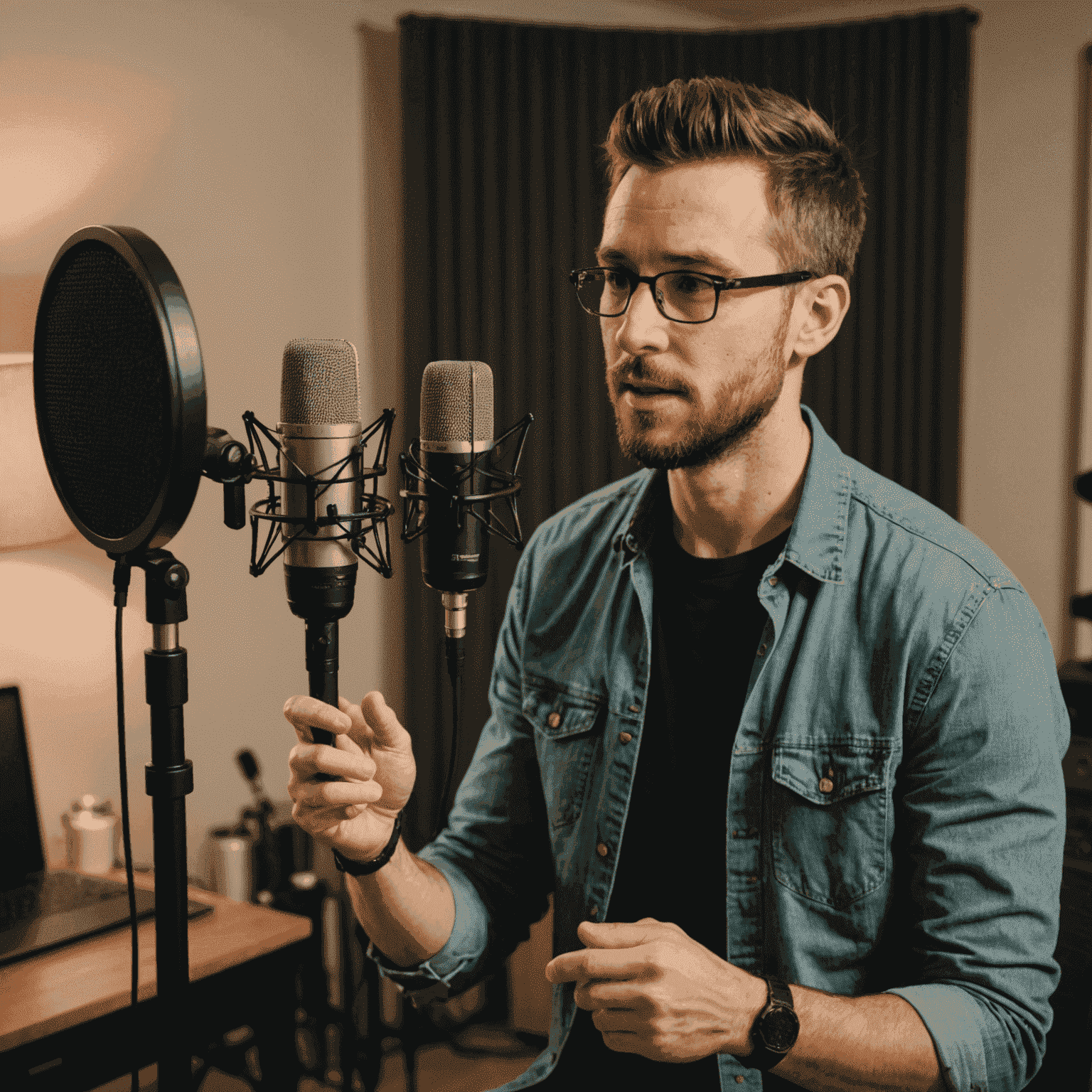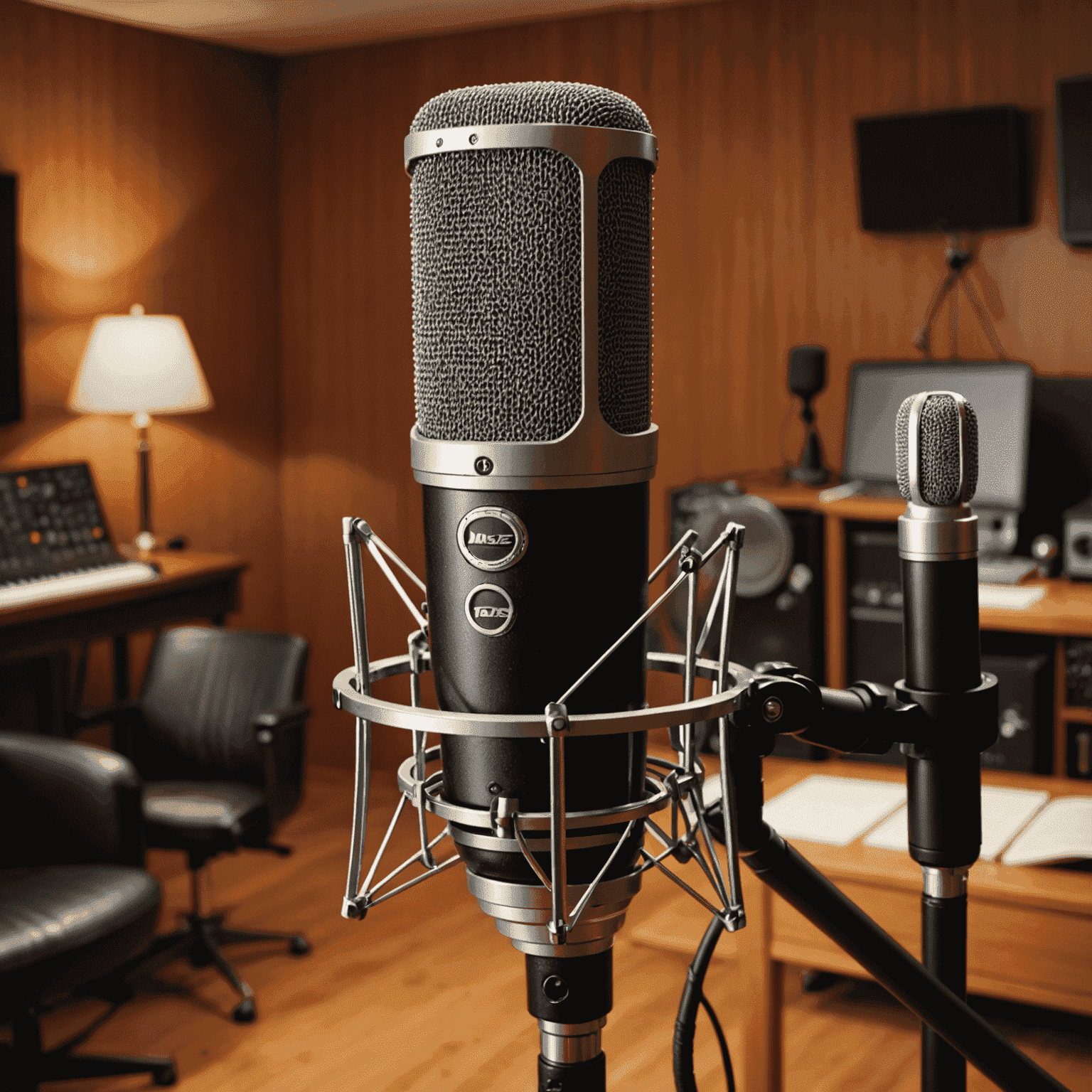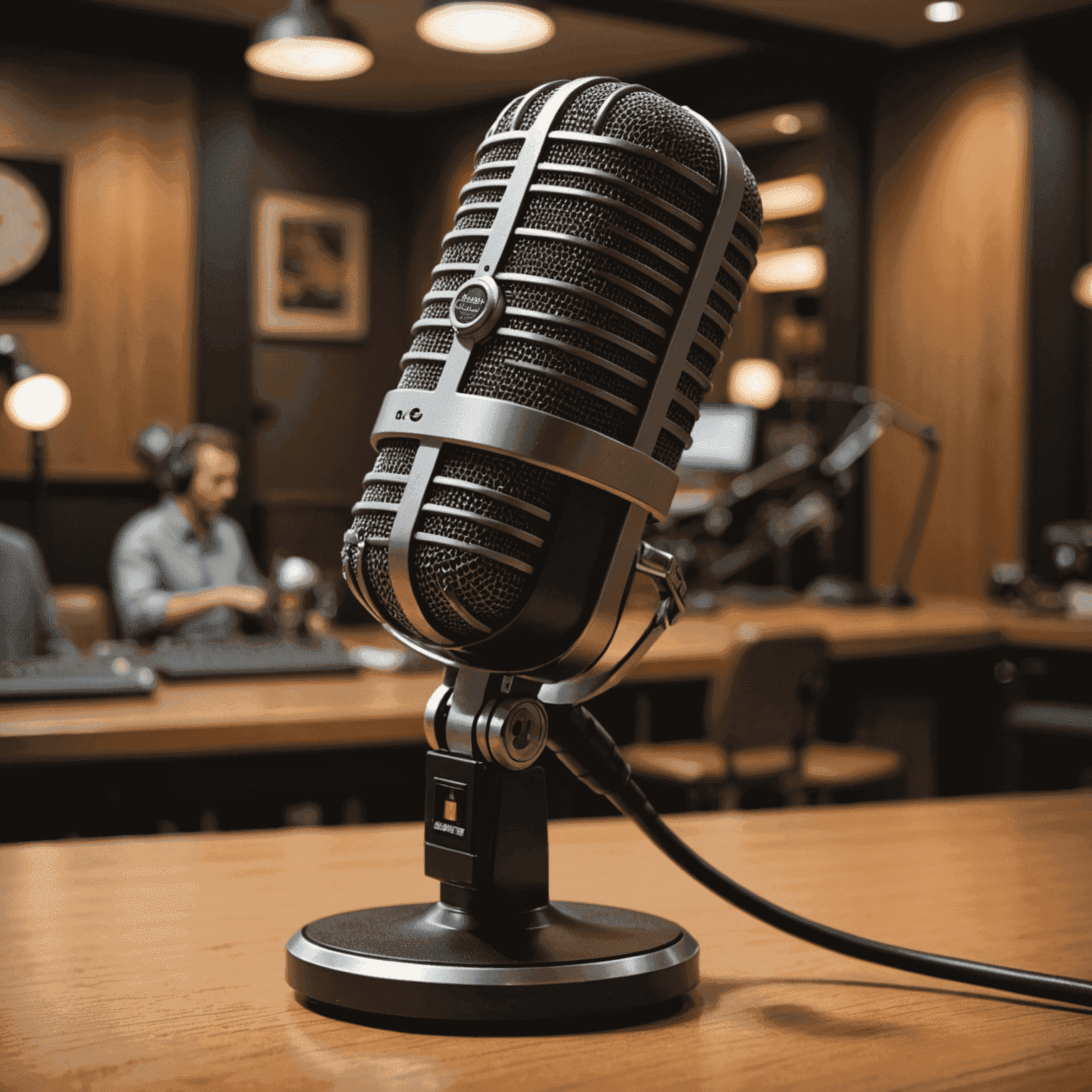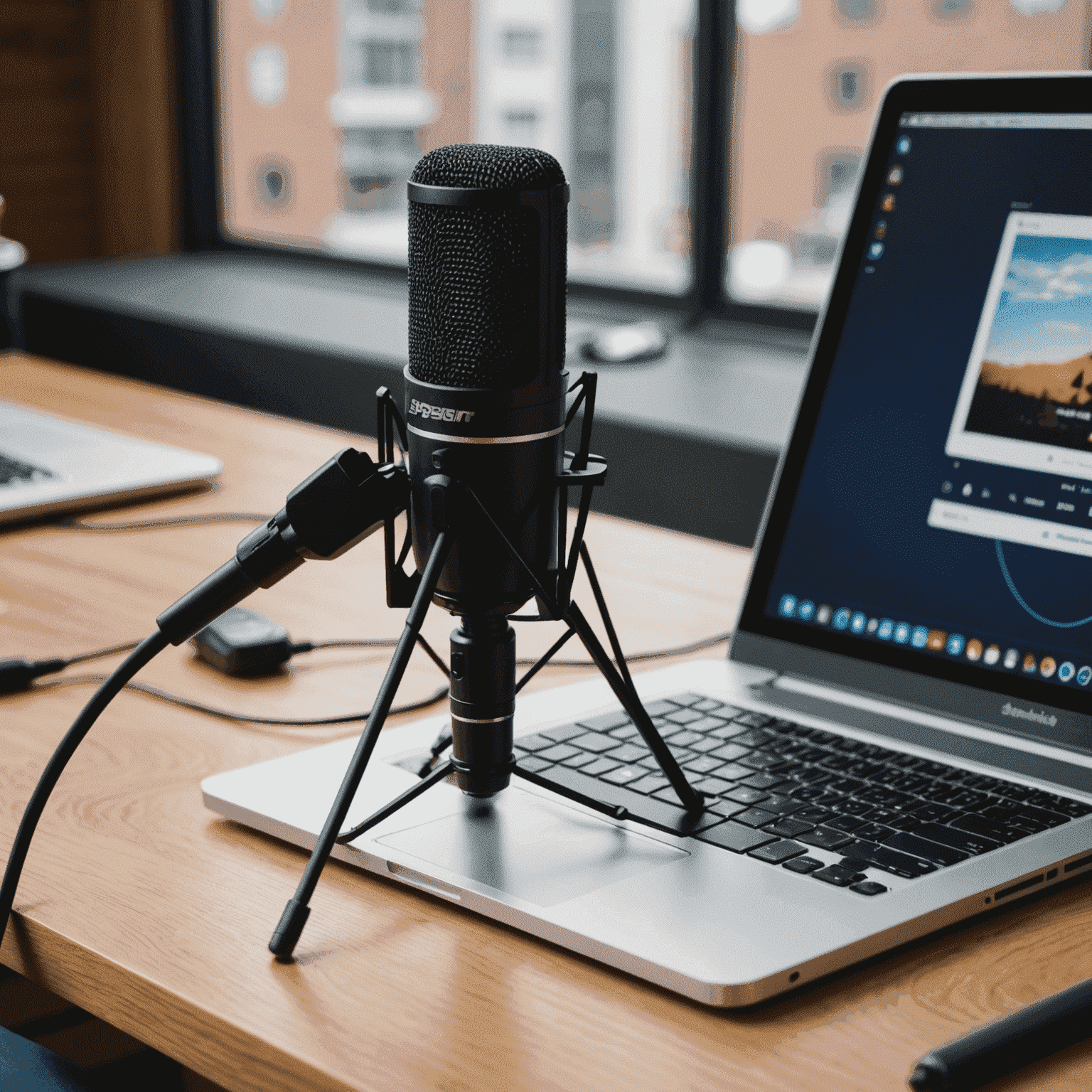Microphone Techniques for Podcasters

Mastering microphone techniques is crucial for achieving professional-quality audio in your podcasts. Whether you're recording in a home studio or a professional setup, these tips will help you elevate your sound and engage your listeners.
Proper Microphone Placement
The key to great audio starts with correct microphone placement:
- Position the microphone at a 45-degree angle to your mouth
- Maintain a distance of about 6-8 inches (15-20 cm) from your mouth to the microphone
- Use a pop filter to reduce plosives (hard 'p' and 'b' sounds)
- Adjust the microphone stand to ensure comfort during long recording sessions
Speaking Techniques
Refine your vocal delivery with these speaking techniques:
- Speak clearly and at a consistent volume
- Maintain good posture to support your diaphragm
- Stay hydrated to keep your voice smooth
- Practice breathing exercises to control your breath
- Smile while speaking to add warmth to your voice
Microphone Types for Podcasting
Choose the right microphone for your podcasting needs:

Condenser Microphones
Ideal for capturing detailed vocal nuances in treated rooms.

Dynamic Microphones
Great for rejecting background noise in less-than-ideal environments.

USB Microphones
Convenient plug-and-play options for beginners and mobile setups.
Room Acoustics
Don't forget about your recording environment:
- Use acoustic panels to reduce reflections
- Place soft furnishings around your recording area
- Consider a reflection filter for portable acoustic treatment
- Record in a quiet room away from external noise sources
By implementing these microphone techniques and considering your recording environment, you'll be well on your way to producing professional-sounding podcasts from your home studio. Remember, practice makes perfect, so don't be afraid to experiment and find what works best for your unique voice and setup.